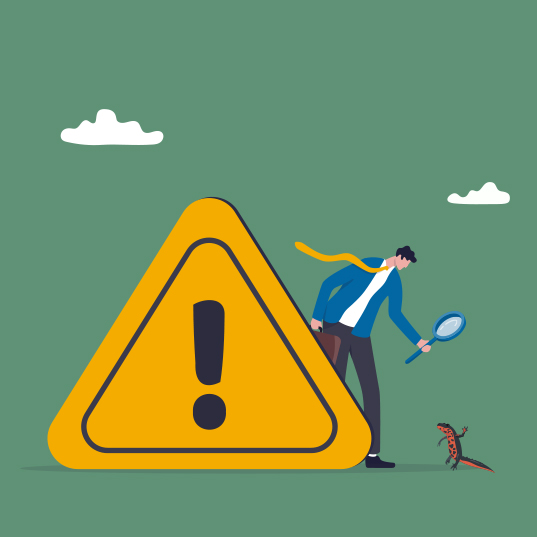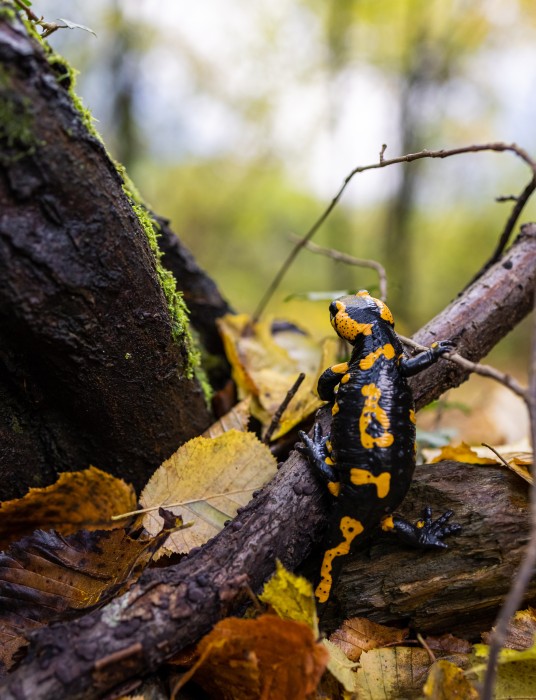It’s a heartwarming story. A tale of people who search the ends of the Earth until they find lost animal species that have not been seen for years. And they do so because they simply refuse to believe these species have become extinct. If just one remaining specimen exists, they will find it and obtain protection so that biodiversity does not have to say goodbye to one of the species that contributes to the planet’s great richness.
What will I learn from this article?
- The curious case of Jackson’s climbing salamander
- How does a species become lost?
- Protecting biodiversity
The curious case of Jackson’s climbing salamander
Jeremy Jackson was the first and only person, in 1974, to spot a specimen of Jackson’s climbing salamander in nature. It was in the lush forests of the Cuchumatanes mountains in Guatemala. Despite months of field work, he discovered just two examples of the species, and then for decades no one saw them again.
 Their disappearance led the species to add to the list of 25 most sought-after species worldwide. A new expedition – in part organized to rediscover the salamander – returned to the region in 2014 with the intention of recovering it and other missing amphibians. But they had no luck.
Their disappearance led the species to add to the list of 25 most sought-after species worldwide. A new expedition – in part organized to rediscover the salamander – returned to the region in 2014 with the intention of recovering it and other missing amphibians. But they had no luck.
Three years later, however, in 2017, Ramos León, a guard at the Finca San Isidro Amphibian Reserve, spotted a Jackson’s, only the third to be seen in over 40 years.
To protect this and other endemic Guatemalan species in danger of extinction, Global Wildlife Conservation, FUNDAECO and the Rainforest Trust joined forces to expand the natural park operating as home to these animals. The venture is part of the quest to pursue the 25 most sought-after species in the world and protect the spaces that shelter rediscovered species.
How does a species become lost?
Species get lost for different reasons. In some cases, they become extinct due to disease, habitat destruction, the introduction of invasive species, illegal hunting, climate change and human actions.
In other cases, scientists have not had access to species because they live in wild areas which are difficult to access or in conflict zones. It could also be that certain species are already very rare and difficult to spot.
There is no international standard defining what constitutes a “lost” species. If a species is placed on the list, it means that no scientists has seen it during at least a decade. To qualify for “lost” criteria, it also cannot be in captivity anywhere in the world.
“A species is considered lost when no scientist has been able to spot it during at least a decade”
 With this aim, and helped by specialists from the International Union for Conservation of Nature (IUCN), Global Wildlife Conservation has drawn up a list of 1,200 organisms of which no one knows the whereabouts. Among them, the 25 most sought-after species have been selected because their conservation is crucial.
With this aim, and helped by specialists from the International Union for Conservation of Nature (IUCN), Global Wildlife Conservation has drawn up a list of 1,200 organisms of which no one knows the whereabouts. Among them, the 25 most sought-after species have been selected because their conservation is crucial.
Presently, the 2022 list includes 8 new incorporations among the most sought after. The efforts of the organization and local conservation teams have resulted in the rediscovery of not only Jackson’s climbing salamander, but also Wallace’s giant bee, an Indonesian tropical pitcher plant, the Vietnamese mouse-deer, Somali Sengi in Djibouti, the Fernandina Island Galapagos tortoise, Sierra Leone crab and Voeltzkow’s chameleon in Madagascar.
But how does one decide what should enter the Top 25 List? Global Wildlife Conservation tries to ensure that the 25 most sought-after lost species encompass taxa, and represent ecosystems, planet-wide, and include terrestrial and aquatic species. And most importantly: they are key to conserving biodiversity.
Protecting biodiversity against the danger of species loss
The search for lost species is principally designed to be a call for action. It is a global movement that injects hope into the daunting narrative of species extinction, and encourages conservationists to raise the profile of those forgotten species from long ago.
“Scientists have catalogued 7.7 million animal species and the IUCN Red List recognizes that 16,306 are at serious risk of extinction”
Scientists have so far catalogued 7.7 million animal species. The IUCN Red List recognizes that 16,306 are at serious risk of extinction. In previous articles, we have covered experts reporting that we are now experiencing the Sixth Great Extinction.
WWF declared that the latest extinction will consist of the “greatest disappearance of specimens since the extinction of the dinosaurs”. But we are beginning to understand now that healthy, resilient and productive diversity and nature is the basis for a prosperous, fair and secure future for humanity. Can we stop our decadent tendencies and save the biological diversity of our planet Earth?
Sources: